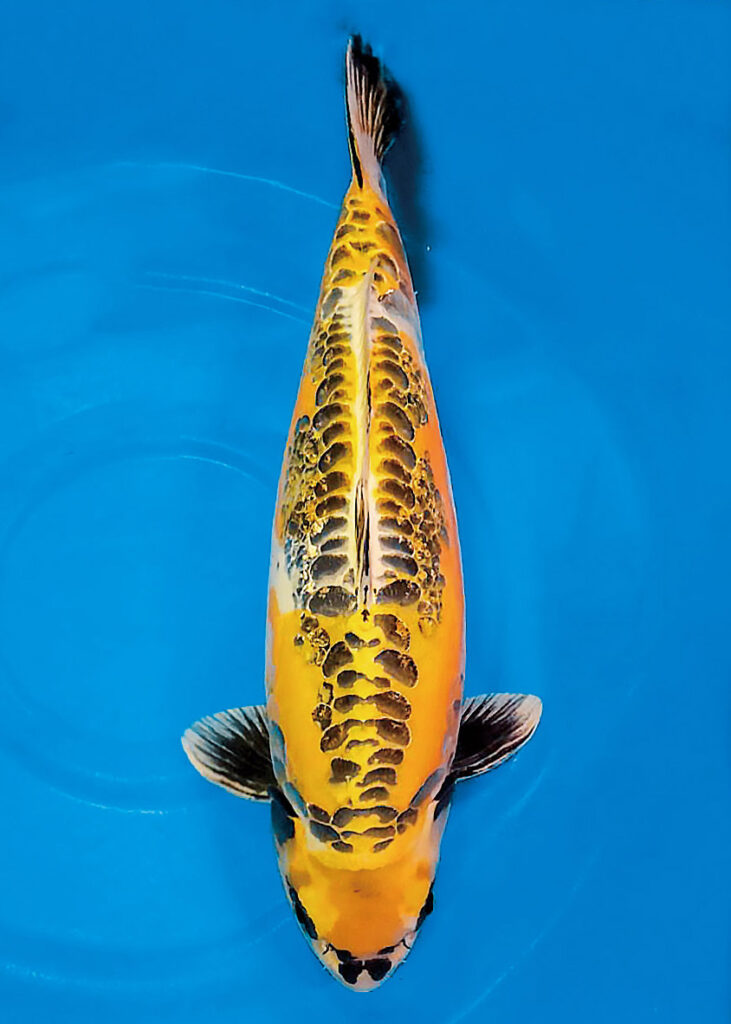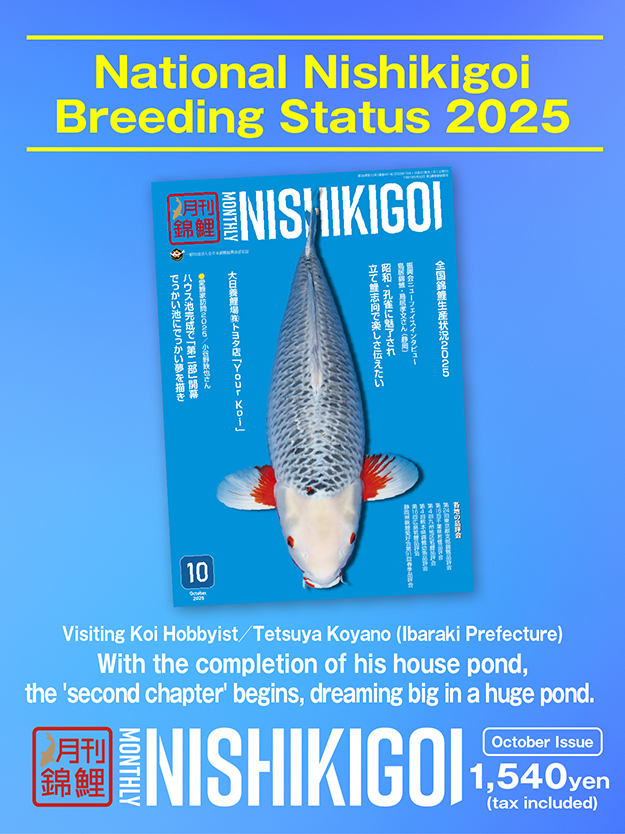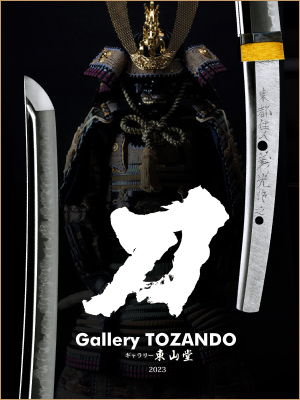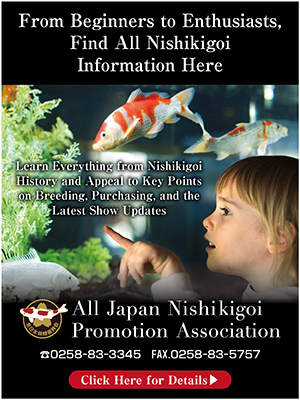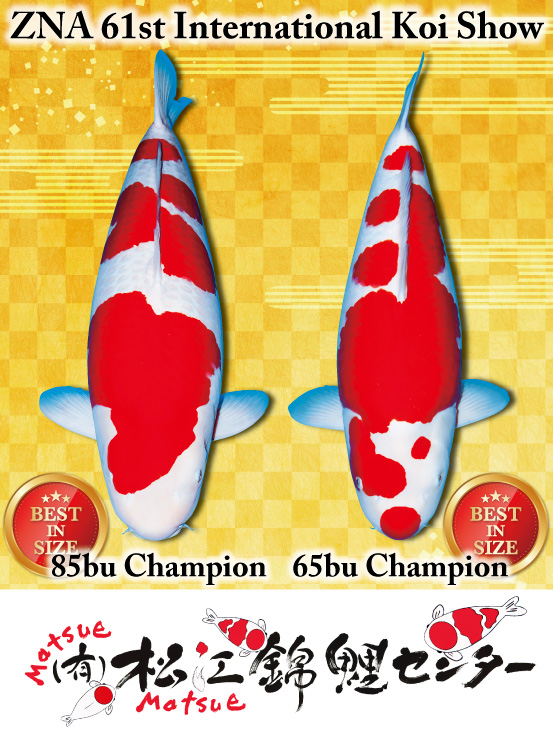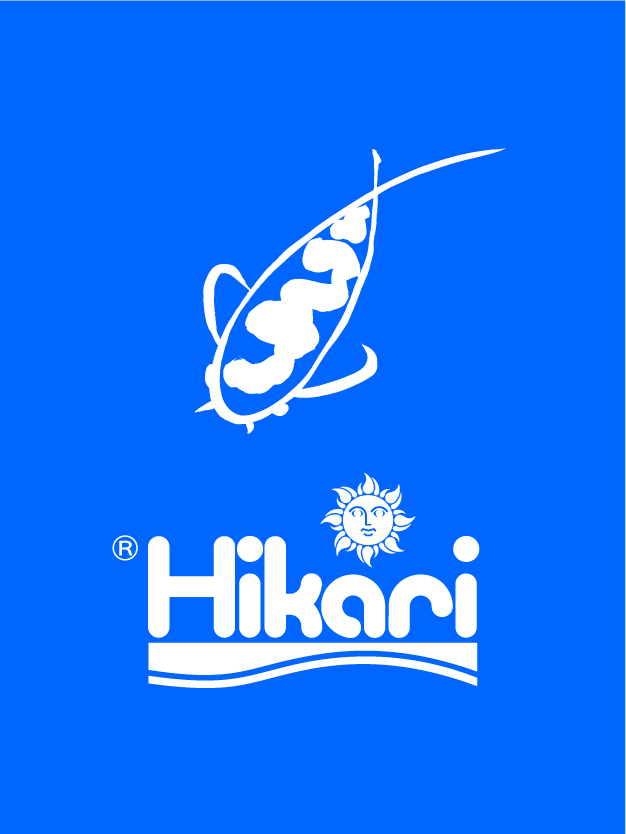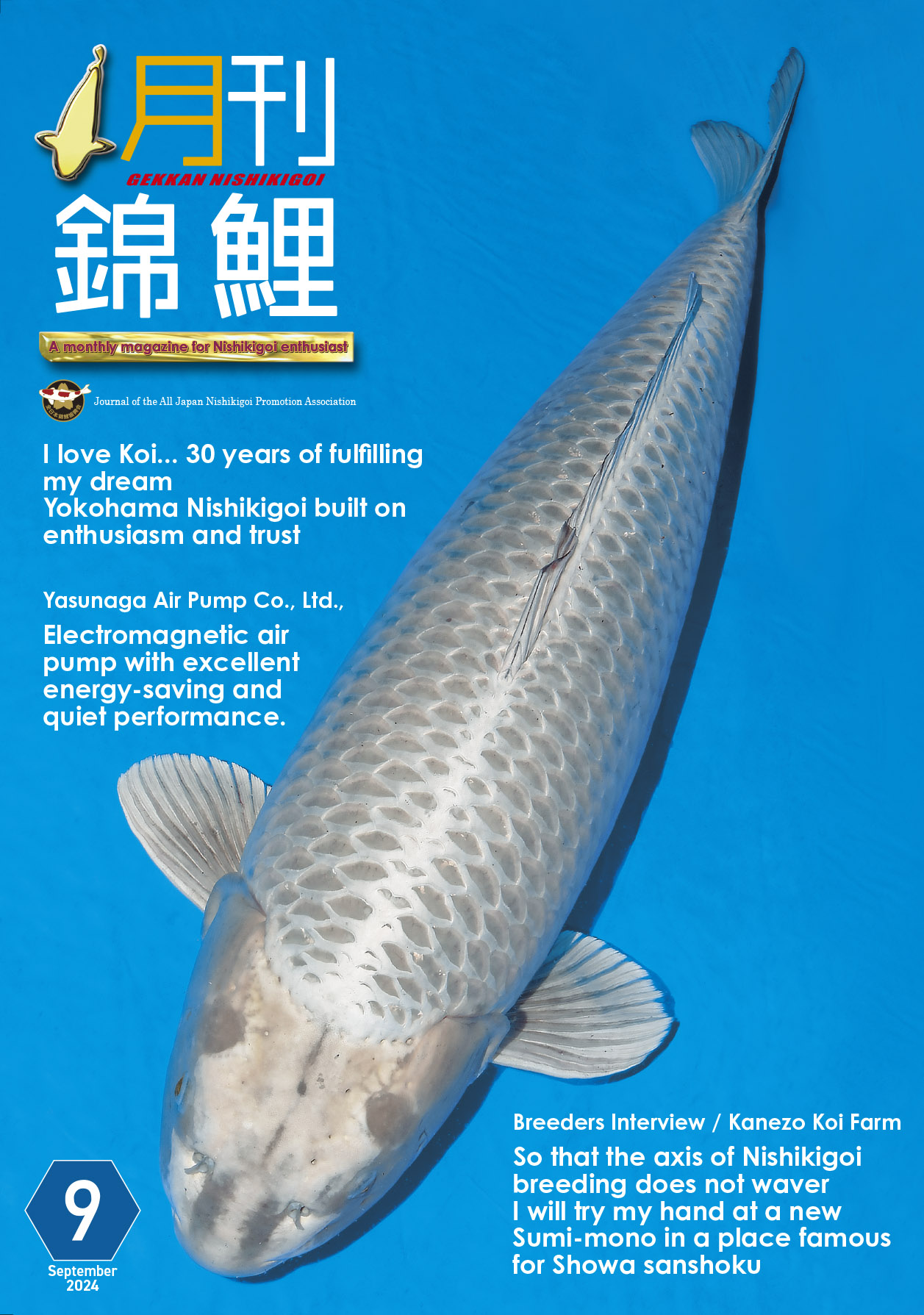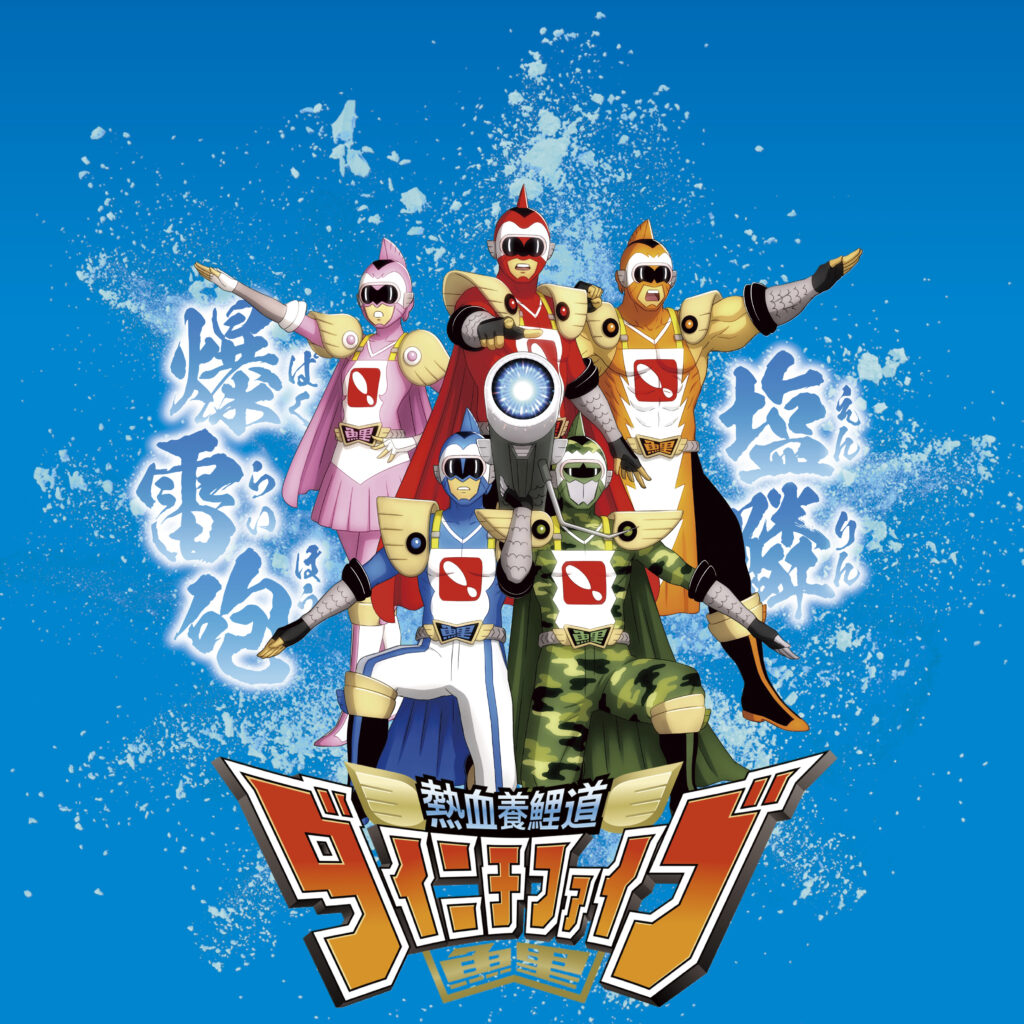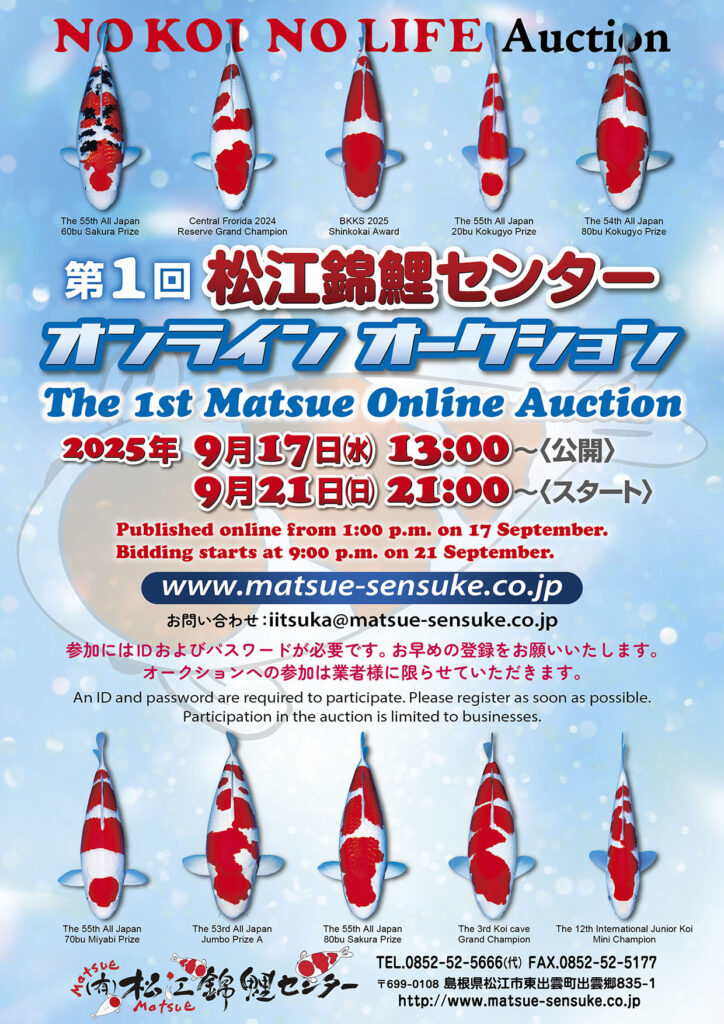— By the way, do you discuss aragoke with Aoki?
Ikarashi: If you look at Aoki’s pond, you’ll see many shiny koi, like BeniKikokuryu and Bniginga. It is sparkling and glamorous. That’s why I go to his house. And it is an excellent opportunity to talk about koi with him, like playing sales, which is fascinating. When I introduced Godzilla, Aoki said it was interesting. I’ve been making Kawarigoi with Aoki, even on different farms, and there are some similarities. I am thinking of increasing the lineup of yellow-based ones myself.
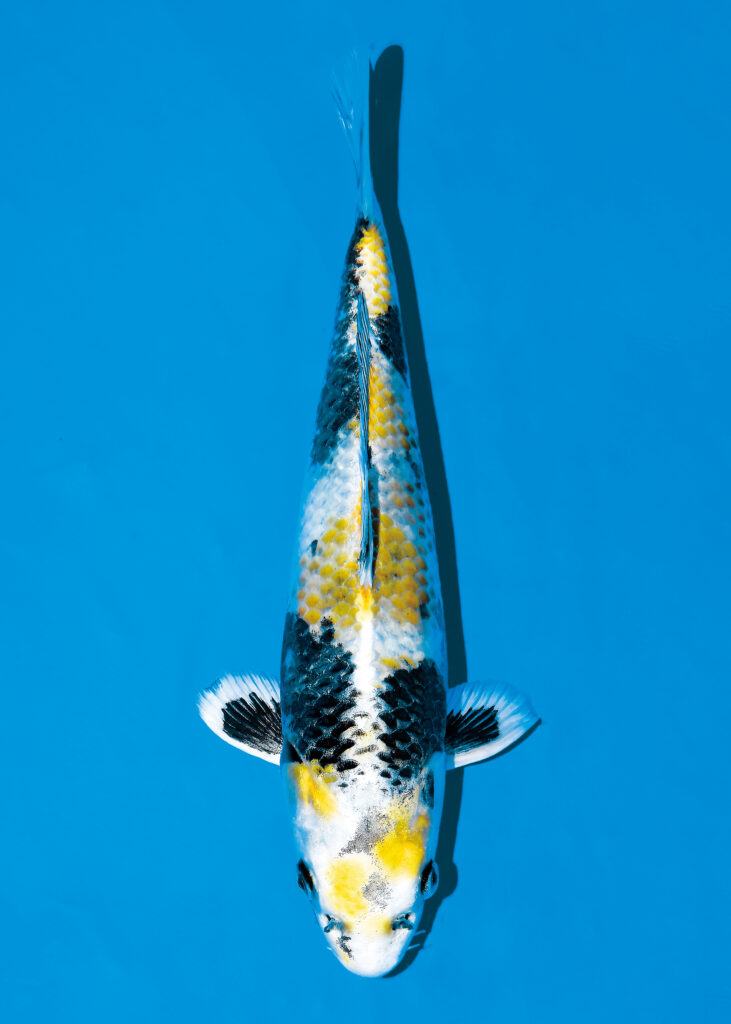
27bu Gold Prize / Yellow Kinshowa
— When it comes to yellow-based ones, I immediately think of Ikarashi’s original variety, Yellow Kinshowa.
Ikarashi: I could add sumi with Yellow Kinshouwa; in contrast, it ended up blurring the yellow patterns instead. I wanted to stand out kiwa, so I made a slightly deeper yellow-coloured one. But people told me that it didn’t look good in that colour. I realized it really had to be a colour, like a lemon. In addition, I want to create kiwa on it, which seems impossible.
I still have been trying to create it every year, though.Moreover, the selling timing is tricky. When I bring Yellow Kinshowa up in autumn, sumi is strong, making the colour appear somewhat greenish and not beautiful. Then, around February, sumi settles, and yellow stands out, finally becoming Yellow Kinshouwa. Moreover, the selling timing is tricky. When Yellow Kinshowa come up from a mud pond in autumn, sumi is strong, making the colour appear somewhat greenish and not beautiful. Then, around February, sumi settles, and yellow stands out, finally becoming Yellow Kinshouwa. When I raised it to be a parent next time, the yellow stretched and blurred, and kiwa disappeared.
— It’s pretty delicate, isn’t it?
Ikarashi: My pond tends to get dark because I have a lot of darker-toned varieties like Ochiba, Mukashiogon and Koganeochiba. Having varieties like Yamabuki and Hariwake, including gold tones, really brightens the overall image. That’s why I’d like to aim for golden tones in each variety.
— The Niigata Prefectural Inland Water Fisheries Experimental Station is working on varieties like Kijiro, KiSanshoku, and KiShowa, which are getting popular in their yellow lineage.
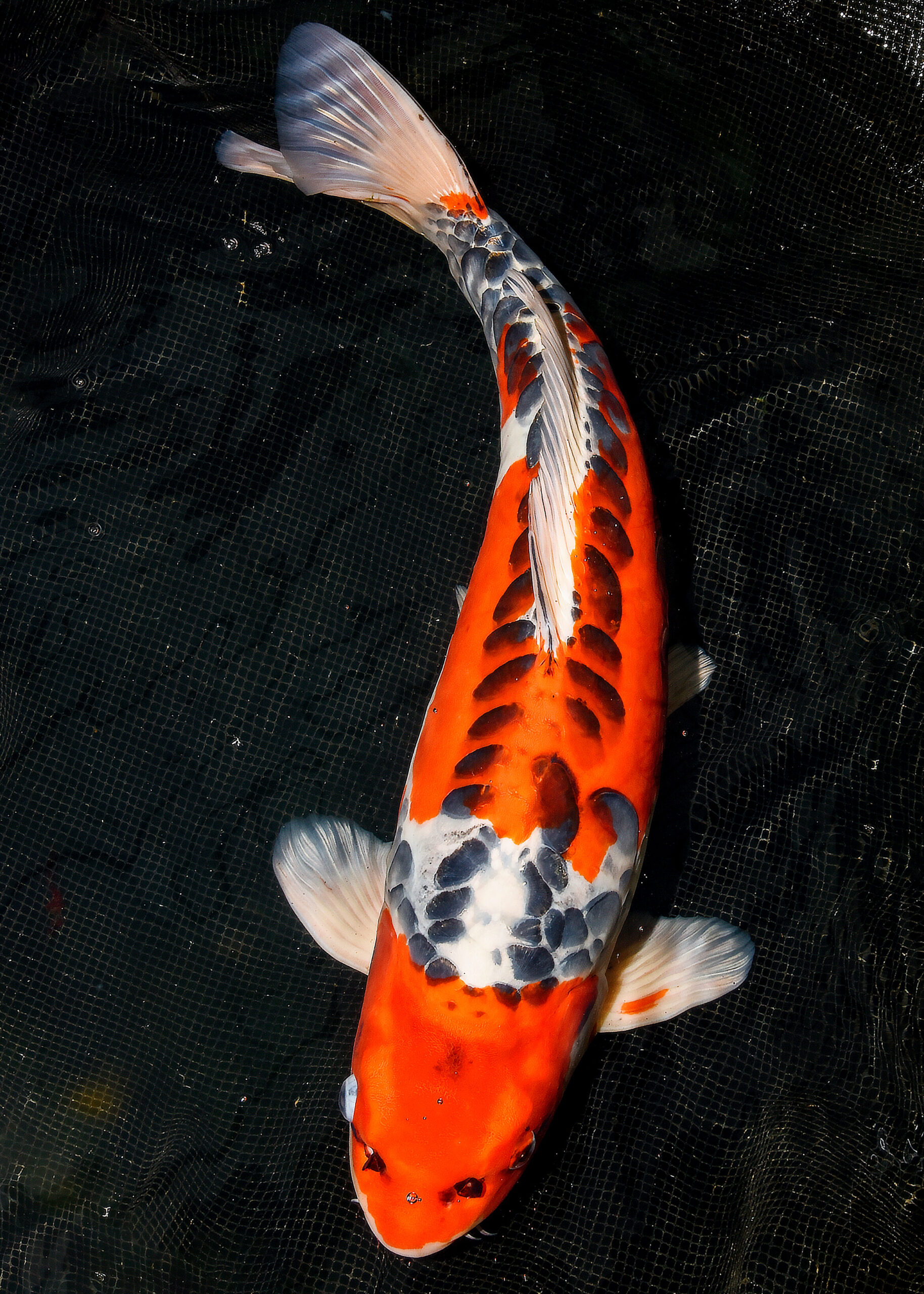
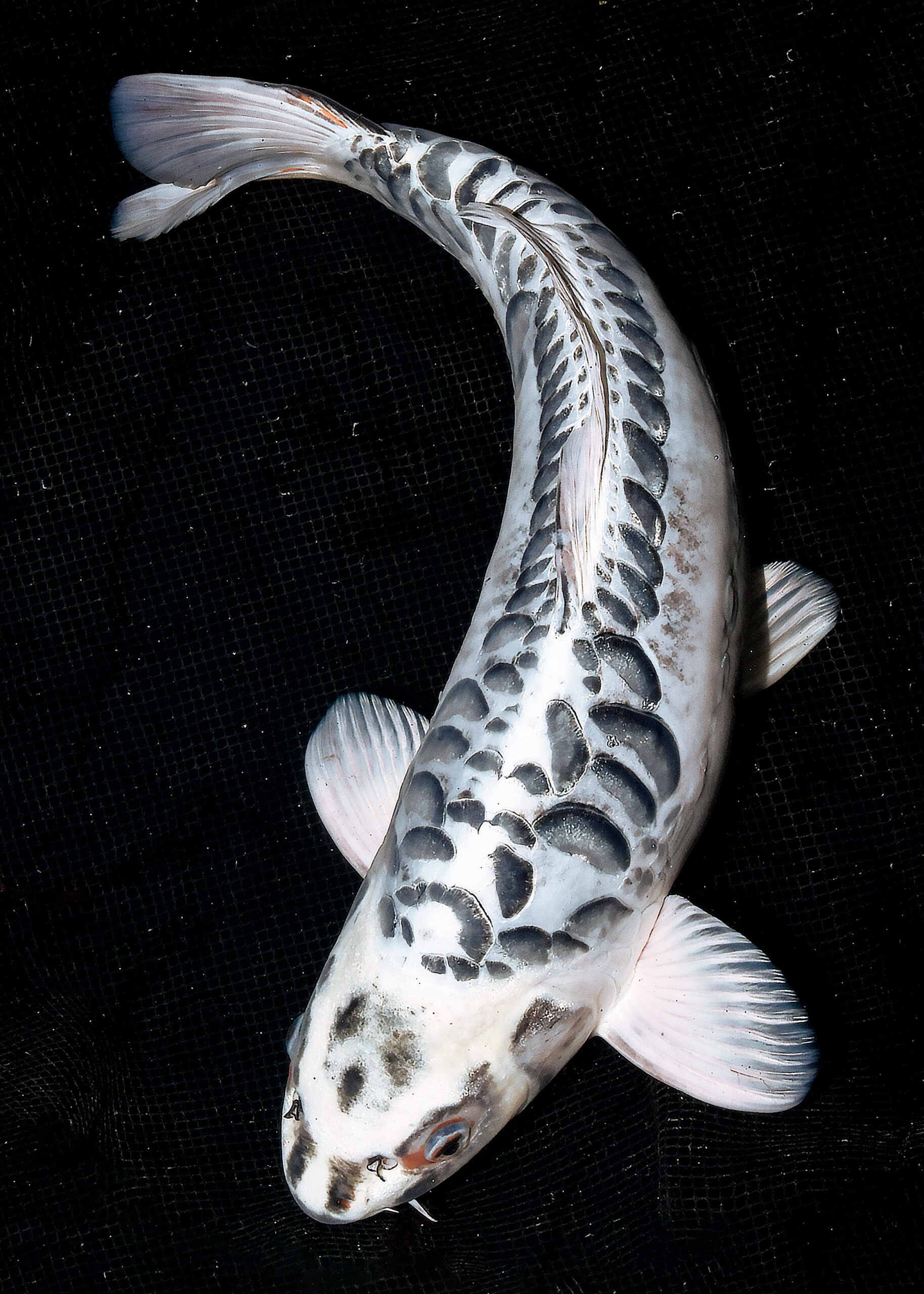
Ikarashi: Marusei (Marusei Koi Farm) is making Mizuhoogon. Marusei mentioned that it would be good if you could create a yellow version of Mizuhoogon. At first, I aimed for something like DoitsukiMatsubaogon, but there was a difference between when the black Aragoke appeared and when it didn’t. To get black aragoke, I need to cross different varieties. That’s why I cross DoitsuYamabuki with KiMatsubaogon or KujyakuMatsuba. However, the crossing includes red pigment, so the body tends to get red spots and dull colour. As a result, productivity decreases. I thought a solution would be to add ginrin. For example, if black spots appear, it can ruin the Mujimono variety. So, I thought it might be better to incorporate black spots that appear intentional as part of the pattern. That’s why I created a variety called Kouryu.
— Aoki, who won the All Japan this time, also had a koi named Kouryu, so did you both name it together?
Ikarashi: No, it’s not like that. When it had a yellow body and black aragoke emerged, I named it Kouryu based on its appearance. By chance, Aoki also named it the same!
— I’ve heard that the colour yellow isn’t stable, but does it hinder improvements?
Ikarashi: Yellow is incredibly challenging because it is difficult to bring out kiwa. It can be produced yellowish koi at tosai and two years old using yellow coloured parent. But as they grow, they tend to turn more orange or reddish, and kiwa disappears.
Kawarigoi is to enjoy and appreciate the change. When selling a koi as yellow patterns, I need to establish and fix those yellow patterns as a variety firmly.
